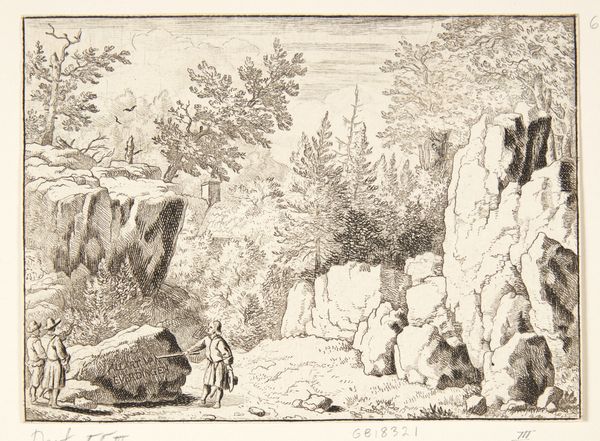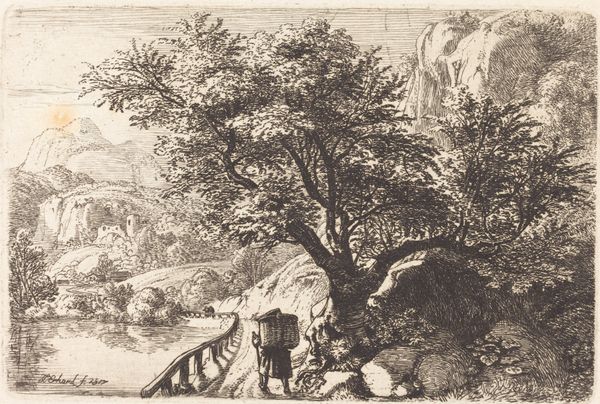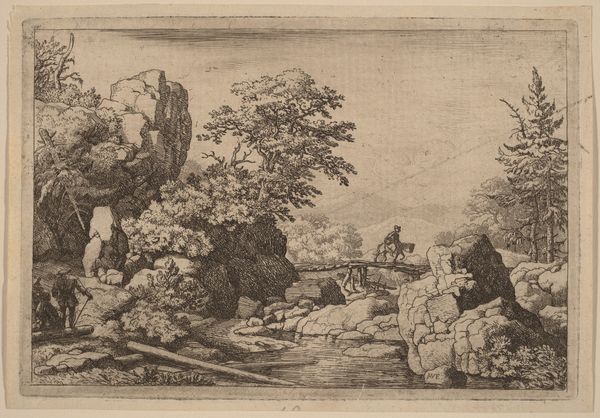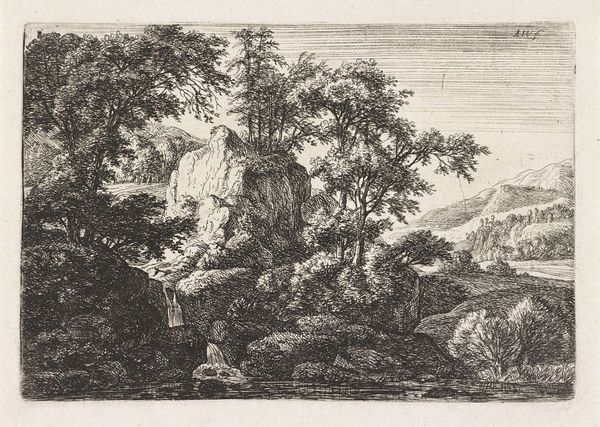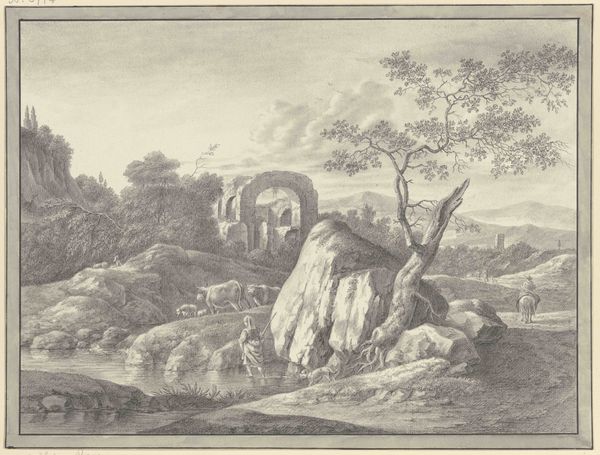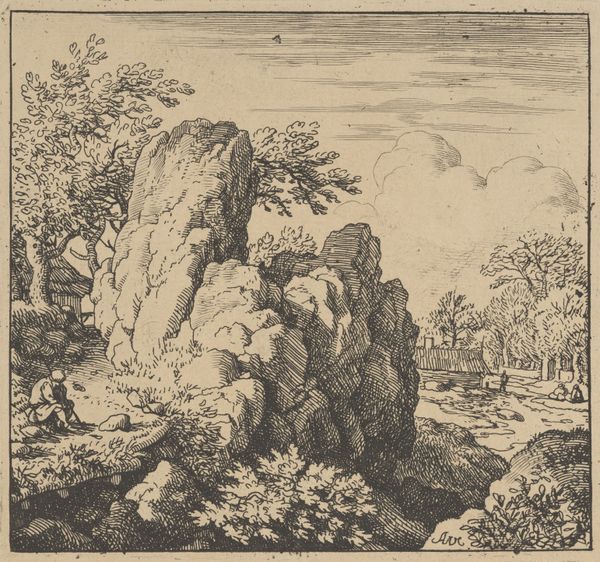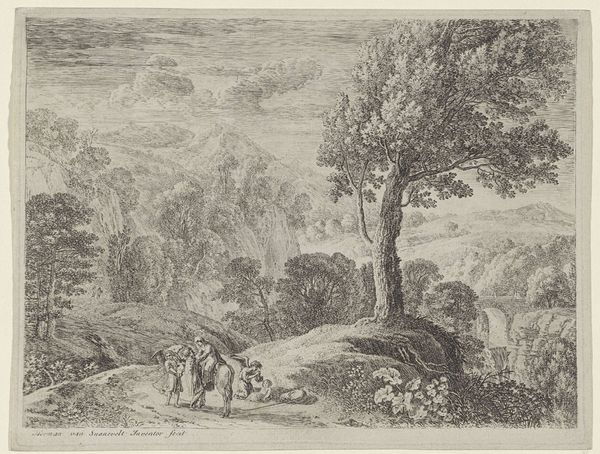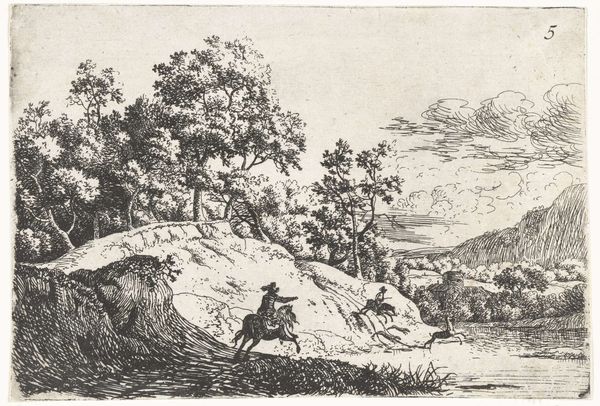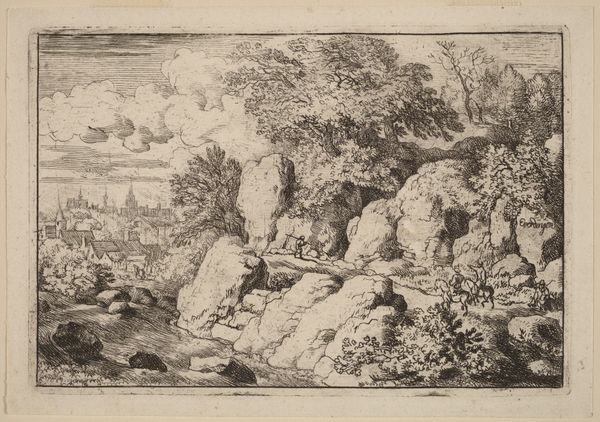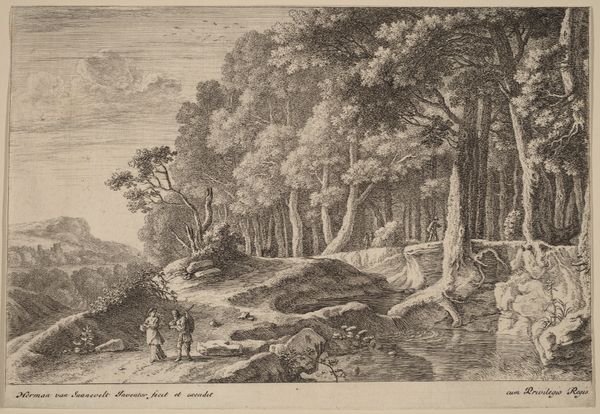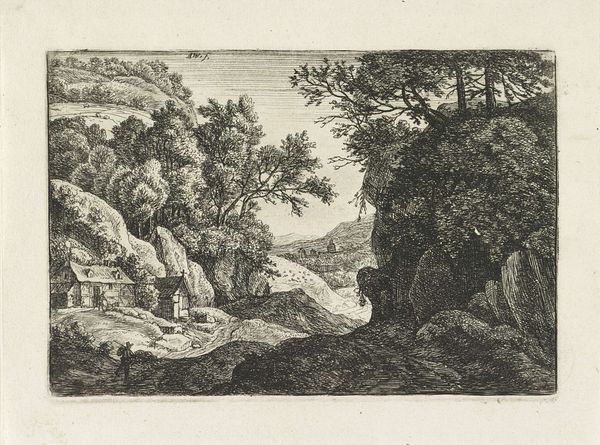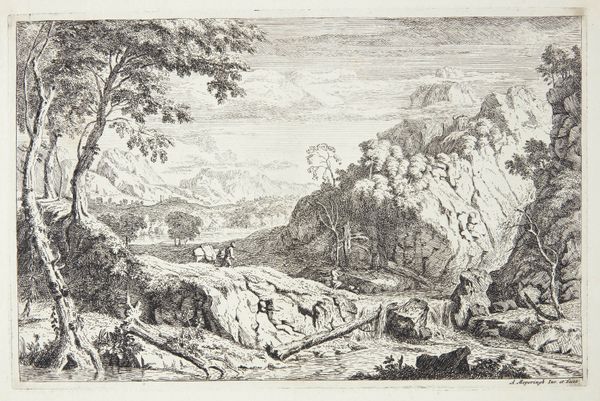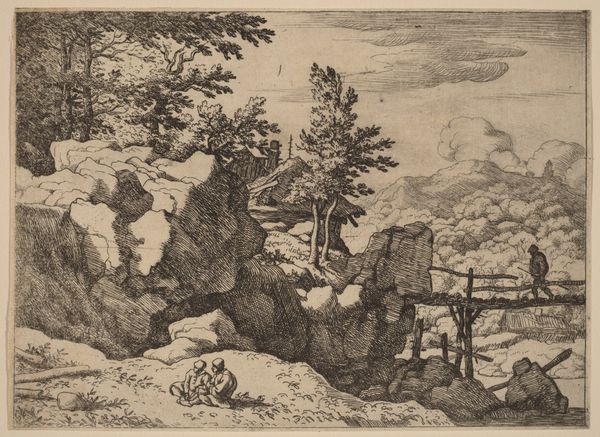
print, etching, engraving
#
baroque
# print
#
etching
#
landscape
#
form
#
mountain
#
line
#
pen work
#
history-painting
#
engraving
Dimensions: height 207 mm, width 303 mm
Copyright: Rijks Museum: Open Domain
Editor: So, this is "Berglandschap met twee figuren," a mountain landscape with two figures, an etching and engraving by Theodor Lubienitzki, made sometime between 1678 and 1726. There's a real sense of journey in this scene. The two figures are venturing out from the shadowed foreground into this vast, detailed landscape. What do you see in this piece? Curator: The layering of history in this piece really speaks to me. Landscape art, especially during this period, often reflected power structures. Who was afforded the leisure to wander and contemplate nature? How did artistic representations of nature influence colonial and imperial projects? Consider the contrasting textures: the controlled lines of the etching mimicking, yet also imposing, a certain order onto the wildness of nature. How does that control relate to the figures? What roles might they represent? Editor: I hadn't thought about the 'control' aspect. It makes me wonder who these people might have been and if there's a power dynamic being shown through them or through their interactions with the landscape. Curator: Exactly! And look at the composition—the figures are relatively small against the immense landscape. What statement does that make about humanity's place within a broader societal context? How does the landscape dwarf their narratives? Are we seeing perhaps a suggestion of our fragile hold on the land, maybe a critique of territorial ambition disguised as a landscape? Editor: That’s fascinating! It shifts my focus from simply seeing a pretty picture to considering a more complex narrative about the interaction between humanity and the natural world, particularly from a historical perspective. It seems landscapes are not at all passive! Curator: Precisely. Seeing the landscape as an active participant in history is essential. The artist isn't just showing us a mountain; they're embedding it with potential for social critique. This print is not merely a pleasant vista, it's a document reflecting its era's ideology and assumptions. Editor: I will definitely keep this in mind next time. It opens up whole new avenues of questioning. Thanks!
Comments
No comments
Be the first to comment and join the conversation on the ultimate creative platform.
